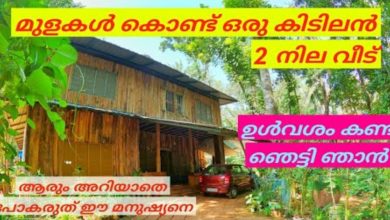mango tree artificial flowering, mavu krishi,

mango tree artificial flowering, mavu krishi.Mango (Mangifera indica L) is one of the foremost and maximum ancient end result known to mankind.
It occupies a pre-eminent area among the sub-tropical culmination consequently while doing mango cultivation we have to attend to quite a number of things so that the dietary price of mango is preserved and we will have excessive best mangoes.
for watch detailed video about mango tree artificial flowering, see below. for getting daily updates follow our facebook page and click see first option in following button. if you interested this. give this post to your friends and relatives.for more videos, subscribe now:JOSEKUTTY GEORGE
Climate and Soil
Mango flourishes properly up to six hundred m above suggest sea degree furnished locality is frost loose and there may be no high humidity or rains in the course of flowering.
The beneficial temperature is 240 C to 270 C, but, it is able to tolerate temperature as high as 480 C furnished that timber are becoming ordinary irrigation.
Mango has been discovered to develop on a extensive range of soils. However, deep and well-drained loam to sandy loam soils are most appropriate for cultivation.
Heavy black cotton, saline and alkaline soils ought to be prevented. The deal range of soil pH for mango cultivation is five.5 to 7.5.
Cultivars
Bombay Green (Malda)
This is one of the earliest varieties of North India, harvested with the aid of the end of June. Fruits are medium sized having robust and pleasant flavour. The pulp is deep yellow, firm and fiber less.
Dashehari
This is the mid season mango range ripens in first half of July and is maximum popular in North India. Fruits are medium sized with exceptional flavour, candy and fibrous pulp. Its retaining fine is good.
You can get dashehari mango live grafted plant from here
Langra
This is likewise a mid season cultivar and ripens in 2d 1/2 of July. Fruits are medium to big in size, flesh is firm, fiber less, lemon yellow and strongly flavoured. This is an crucial sort of North India with biennial bearing habits.
Samar Bahisht Chausa
This is a late maturing variety of North India ripening in first fortnight of August. Fruits are massive with mild yellow shade having soft and candy pulp. It is shy bearing.
Some crucial hybrids of mango:
Malika,
Amrapalli
Cultivars Amrapalli is dwarf and favored for high-density plantations.
Propagation and Rootstock
Rootstock used for grafting is grown from stones of seedling mango trees. The stones are sown soon after they may be removed from the ripe fruit as they free their viability very soon.
Before sowing, stones have to be immersed in water and only the ones stones are sown which sink in water as those are taken into consideration to be viable.
The stones are sown in July-August in nicely-prepared beds. In the beds, the seeds are sown in lines which are forty five cm aside and a distance of 60 cm is left after every two rows to facilitate the cultural practices and grafting of seedlings.
The stones after sowing are covered with the combination of sand and farmyard manure. The seedling assumes graft capable size in next July-August but a number of the well-cared seedlings come to be healthy for grafting even in March-April.
Grafting Methods
Mangoes may be propagated with the aid of several strategies however it’s been determined that veneer and aspect grafting are green in addition to inexpensive than inarching technique. The following factors should be kept in view, at the same time as selecting and getting ready scion wooden for grafting.
The scion sticks must have equal thickness to rootstock.
The scion sticks have to be decided on from terminal non-flowered shoot, that is of about 3 to four months of age.
The scion stick must be defoliated leaving a portion of petiole 7-10 days before their detachment from the mother plant.
Grafting time
Grafting can be achieved from March to April and from mid August to September.
Planting
The pits are dug at some point of summer time and packed with 20-25 kg nicely rotten farm-yard manure and garden soil. The distance of planting varies with cultivars. However, eight-10 m distance in each methods is recommended. During planting, earth ball must remain intact and graft union ought to be above the floor degree. The following points must be kept in attention while choosing plant materials:
Plants should be obtained from dependable nursery and must be of recognized pedigree.
The graft union should be easy and approximately 25 cm above from floor level.
The vegetation ought to be vigorous and immediately growing and unfastened from diverse insect-pests/diseases.
The plant must be taken out with widespread earth ball to keep maximum a part of root system intact.
The plant ought to be treated cautiously all through transit to keep the graft union as well as the earth ball in sound circumstance.
After care of young Plants
Provide irrigation to the newly planted younger fruit vegetation. Avoid heavy watering and stagnation of water of their basins.
Remove/pinch off stock sprouts every time they appear.
Remove tying material on the bud/graft union, in any other case it could reason constriction.
Provide aid to the flora for his or her upright increase.
Protection from frost and warm climate
It is vital to shield the younger flora for as a minimum 3-4 years towards frost and occasional temperature damage by overlaying them with appropriate thatching fabric. Irrigation also can be beneficial to beat back unwell outcomes of frost.
Protection of flowers/bushes against warm weather by way of white washing the lower basal portion of stem is also perfect. Other measures, like wrapping the stem/trunks of vegetation/timber with antique gunny luggage or providing thatches to younger flora can also be achieved.
Training and Pruning
Training of the tree for well spaced branches is essential in early years. The most important branches must grow in unique guidelines at least 30 cm apart and with correct crotch angles. As mango bears terminally, so annual pruning is not done except disposing of over crowded, diseased and dead branches.
Top-running of inferior mango bushes
The vintage unproductive and inferior seedling bushes which can be located in big numbers every wherein, may be rejuvenated and stepped forward by way of the manner of pinnacle-operating.
The selected scaffolds limbs of inferior or unproductive bushes, preferred to be top labored are headed again in Feb-March. The cut ends are handled with Bordeaux paste. Many shoots emerge inside a quick time beneath the stubs.
Out of those, 2-three energetic shoots in line with branch or limb are decided on and ultimate are eliminated. These shoots make fast boom and grow to be suitable for grafting by using August-September of the identical year.



